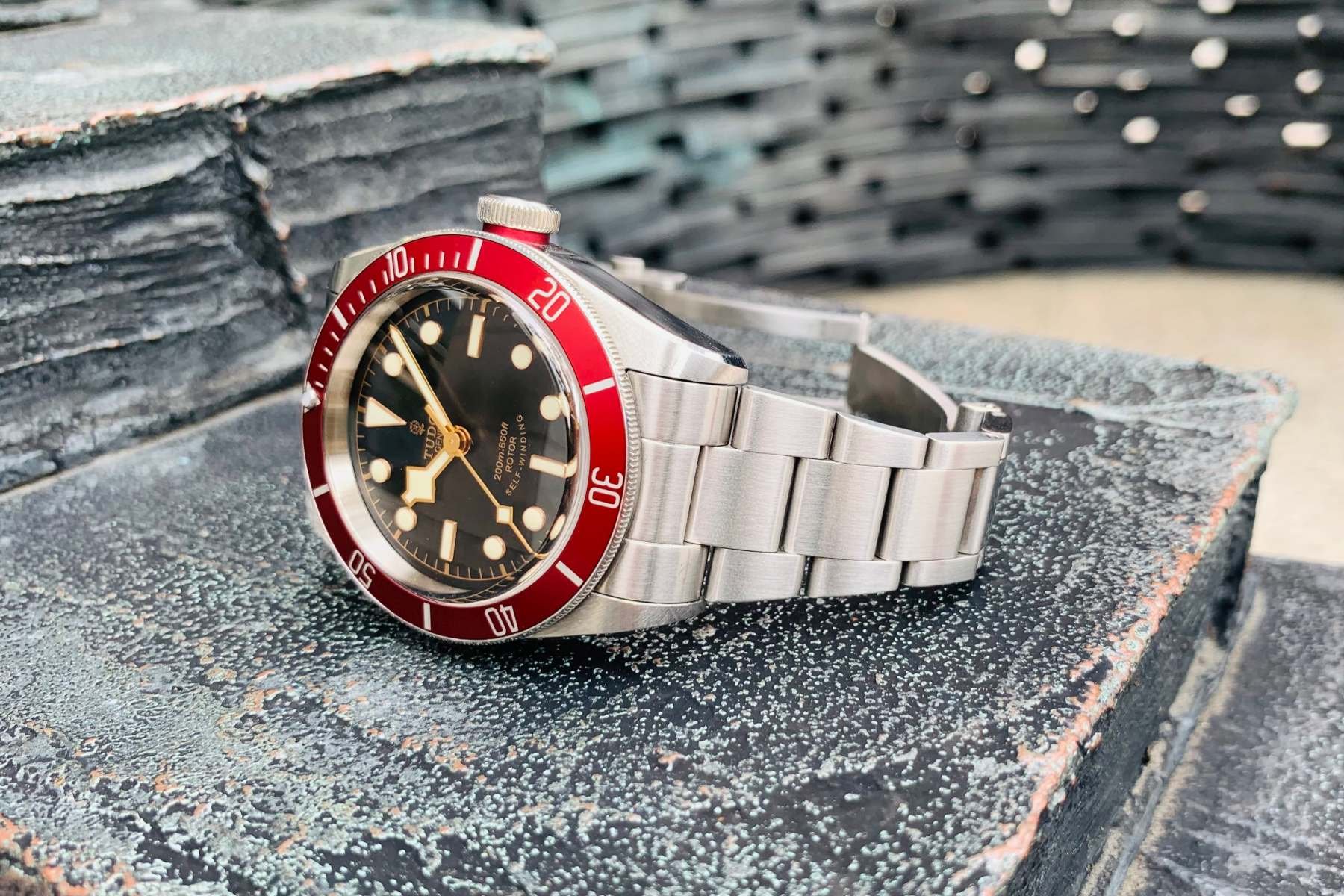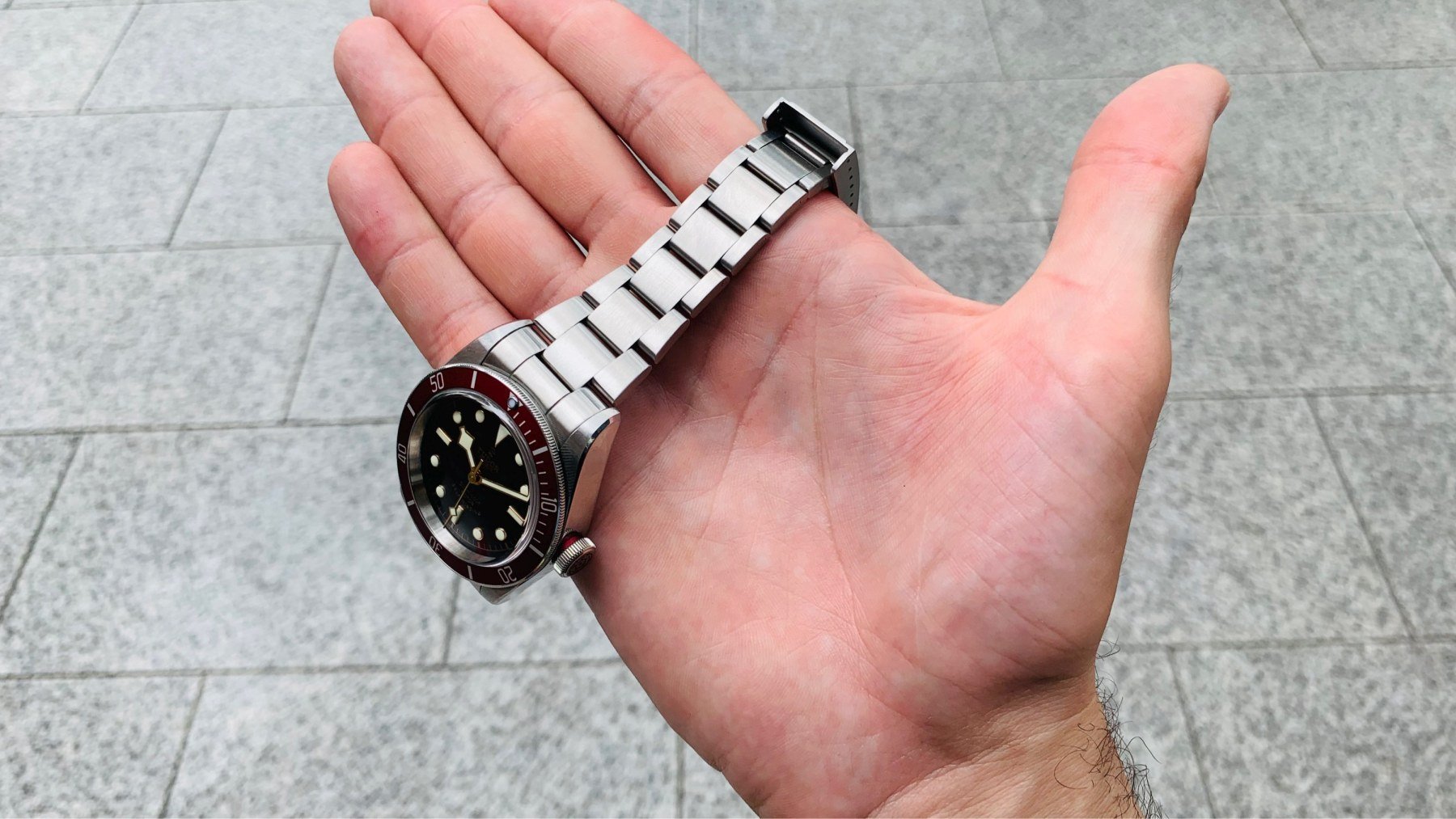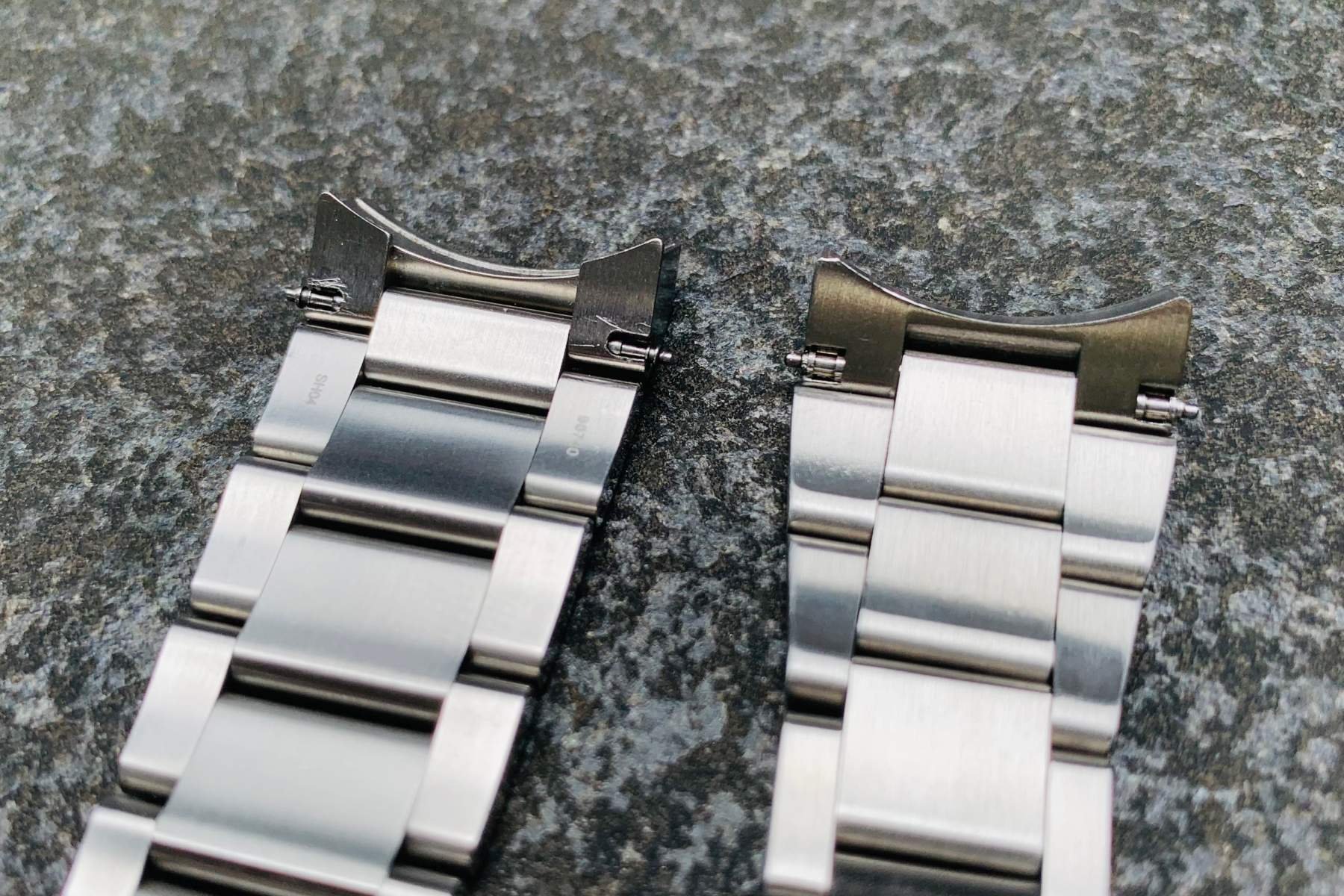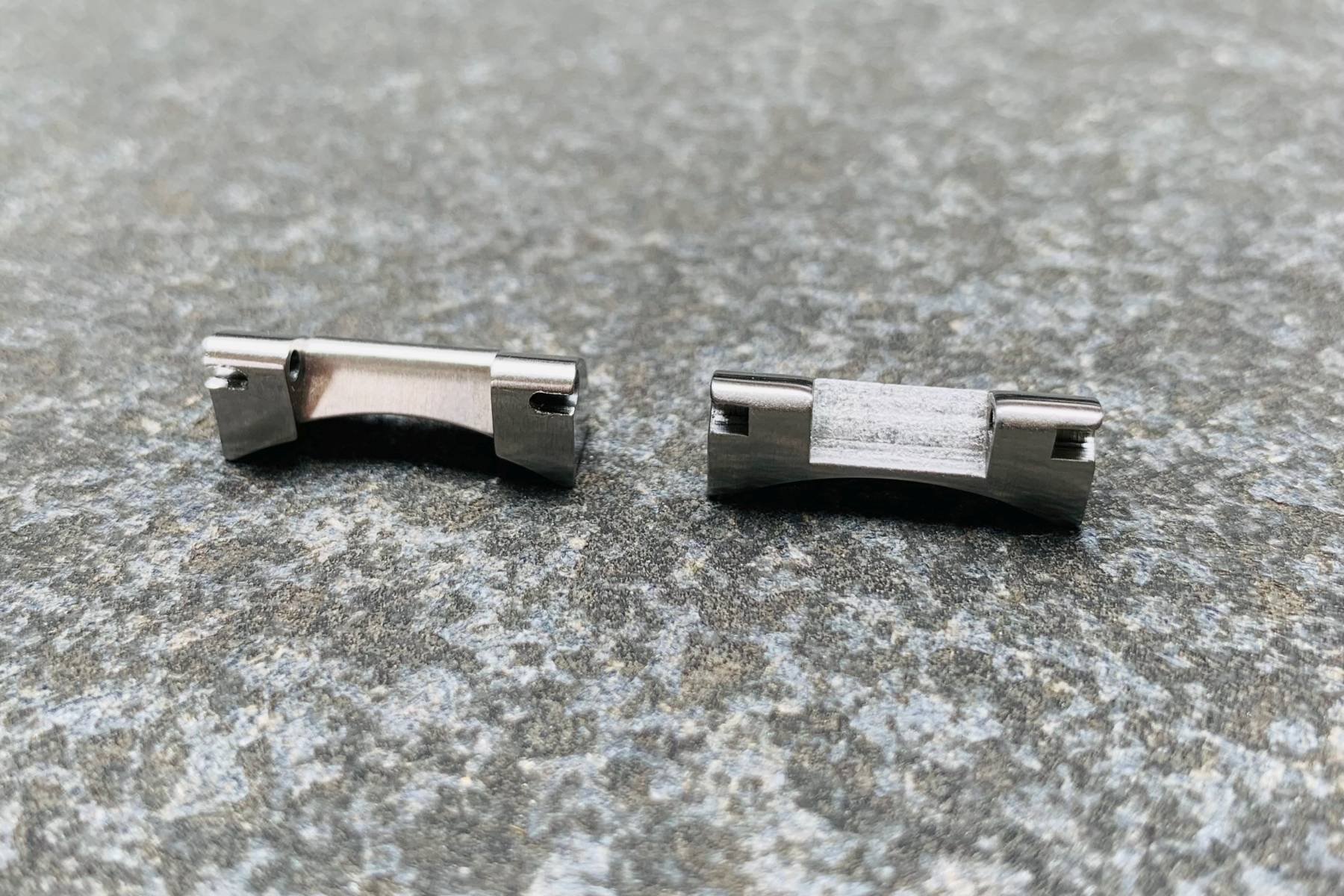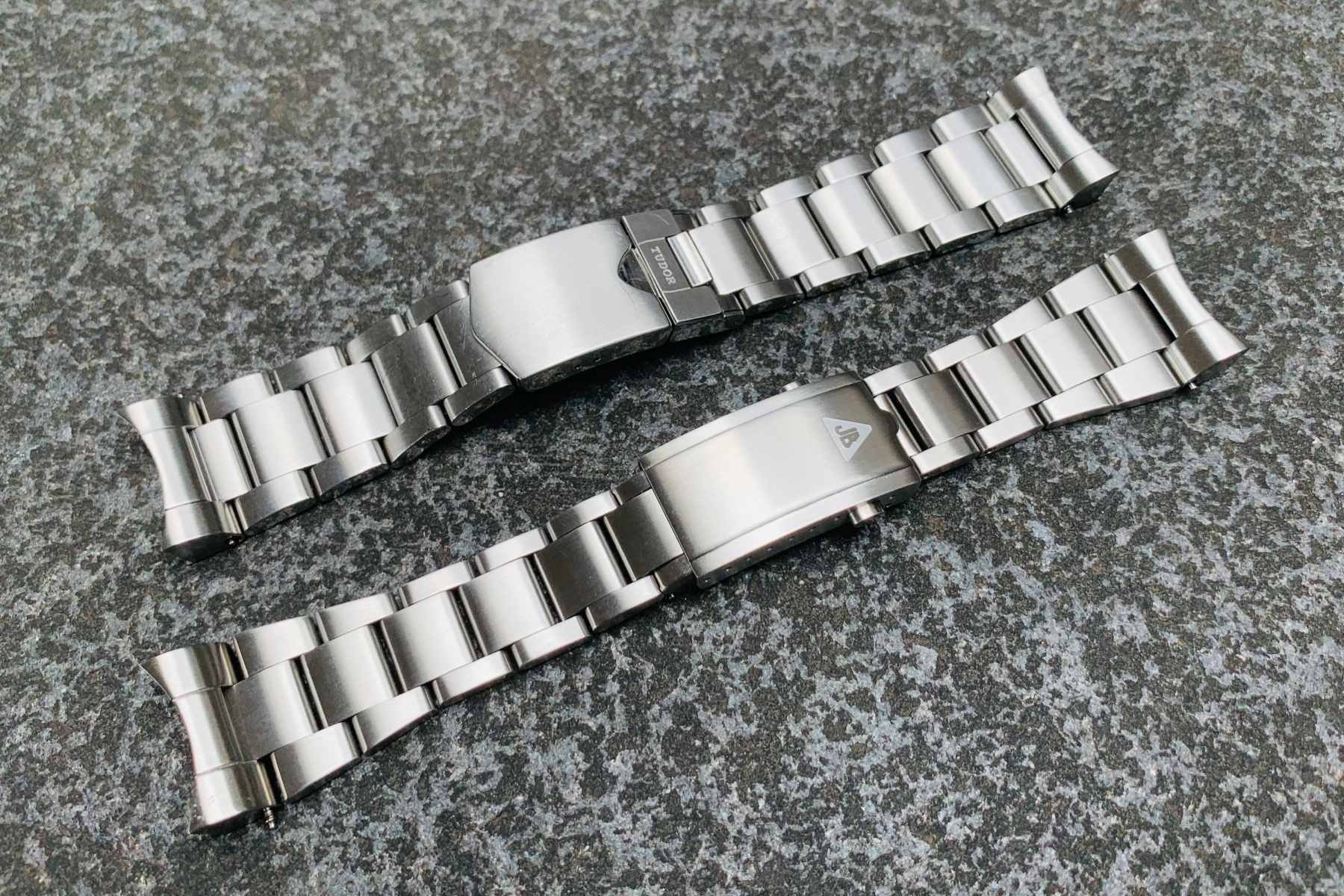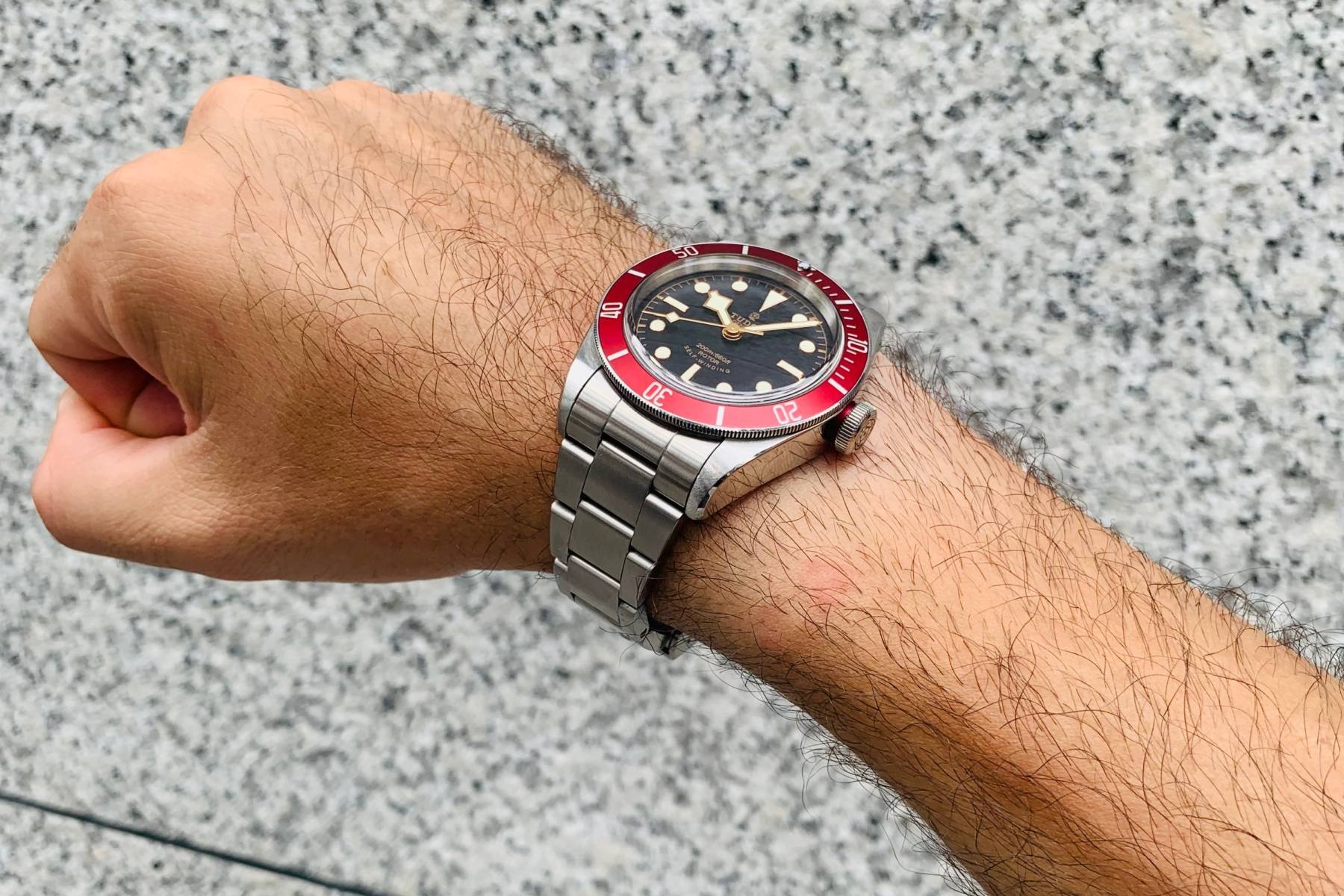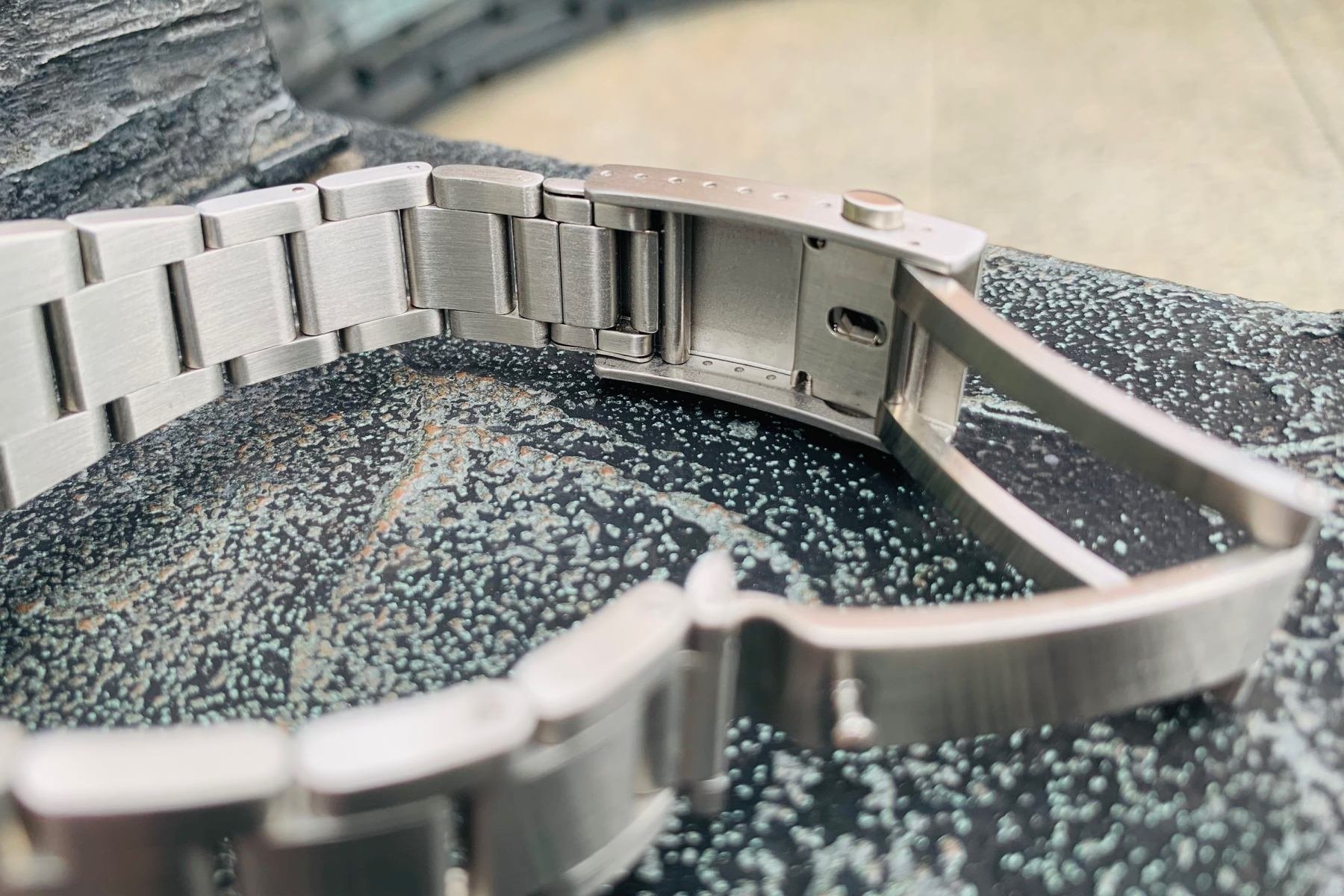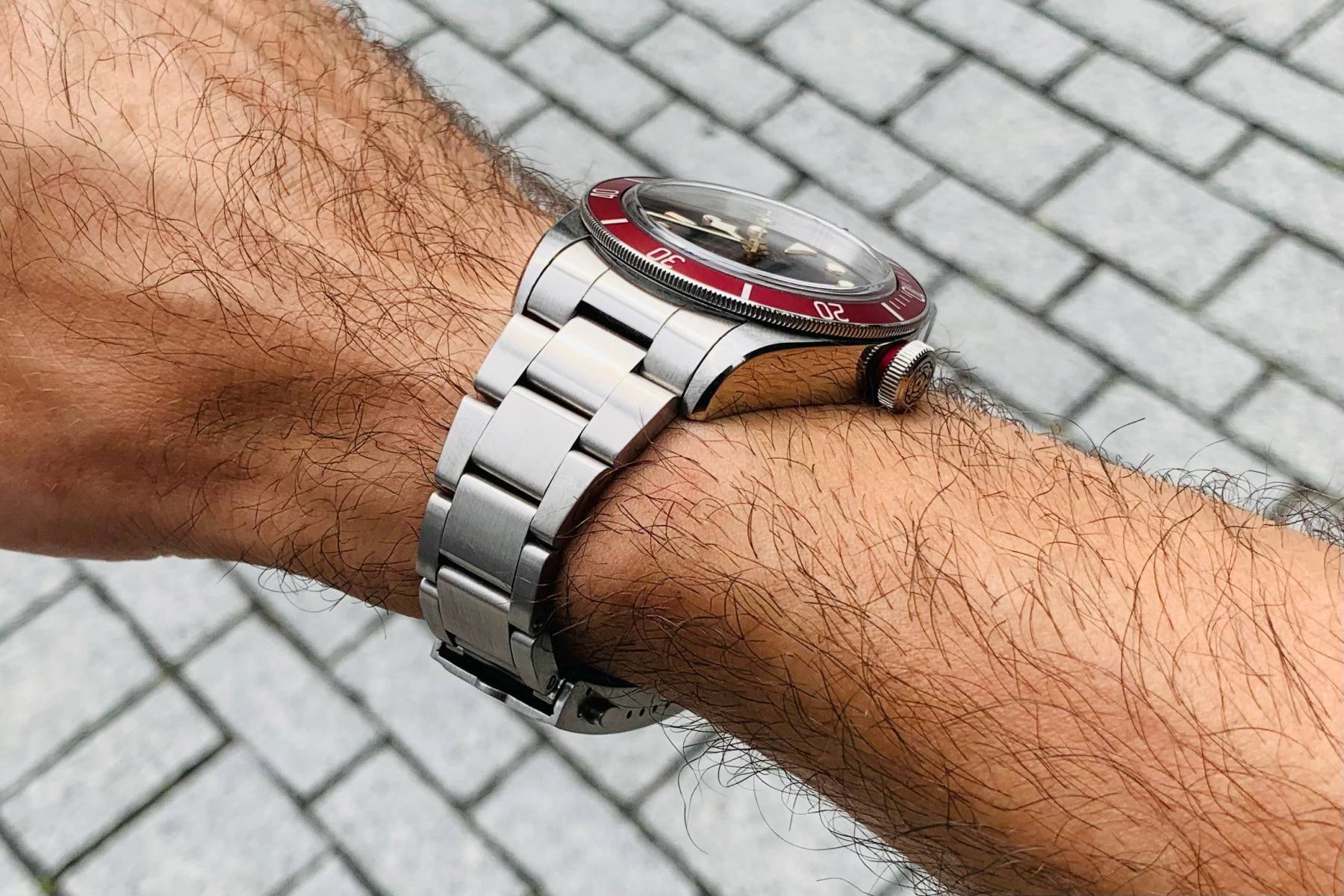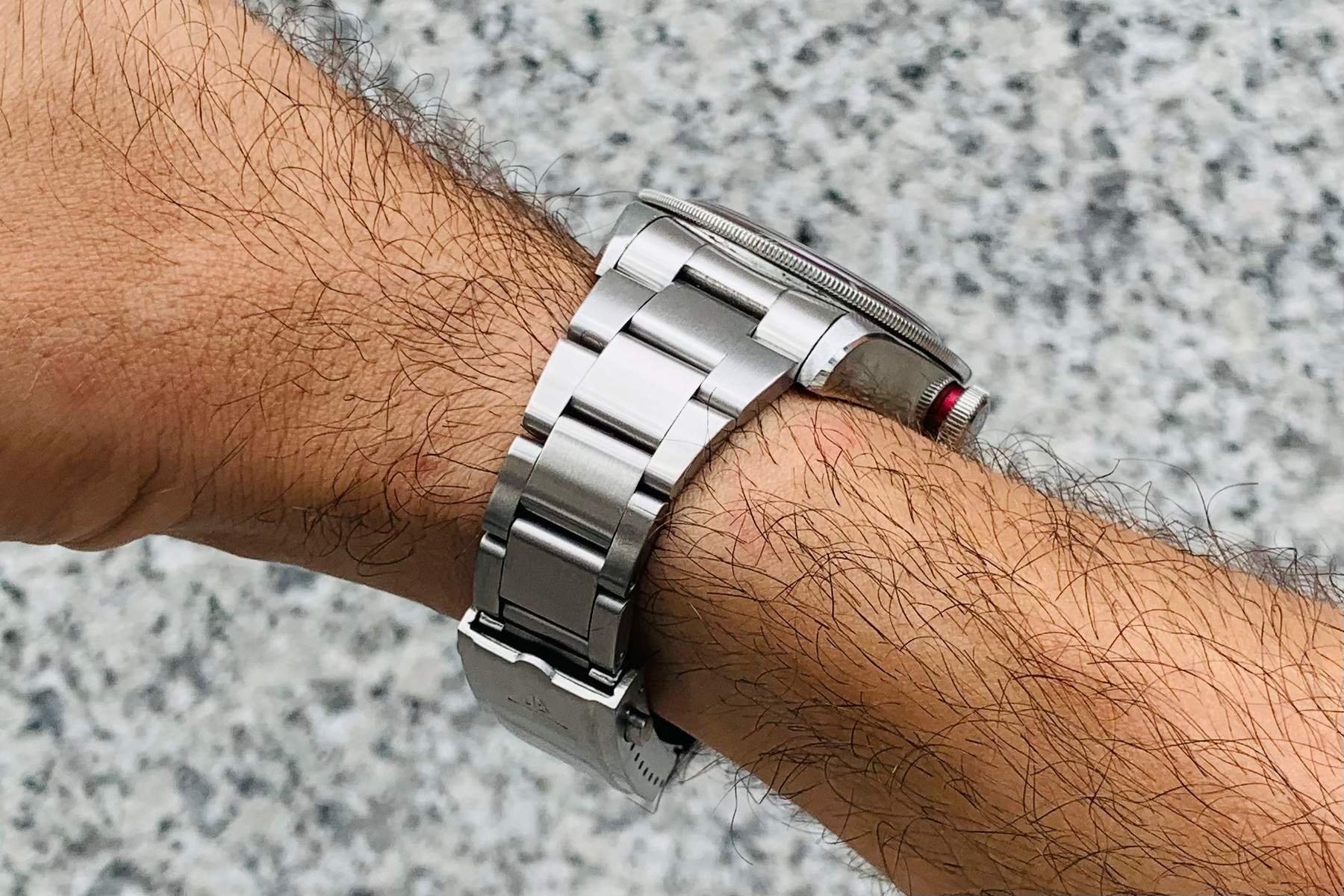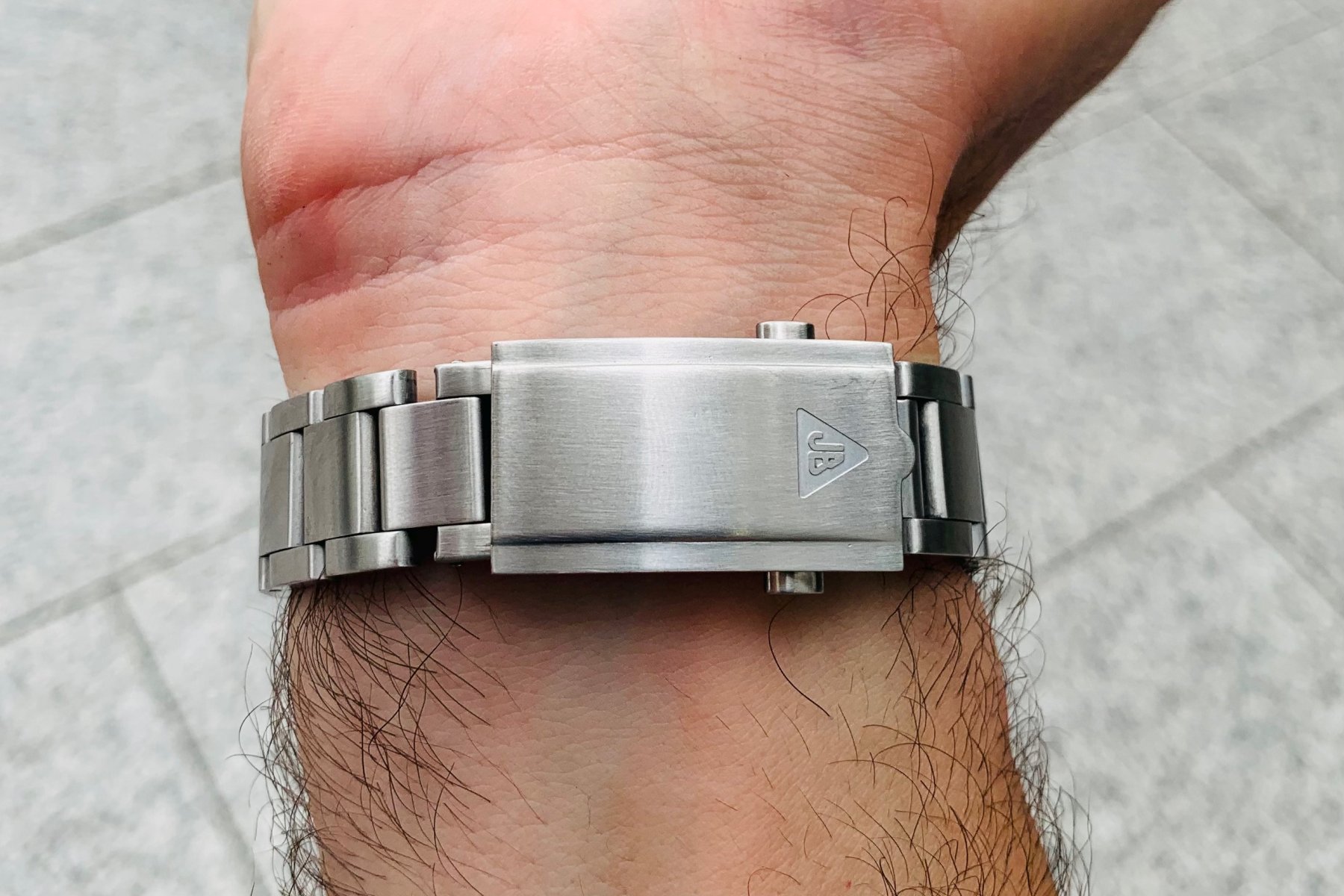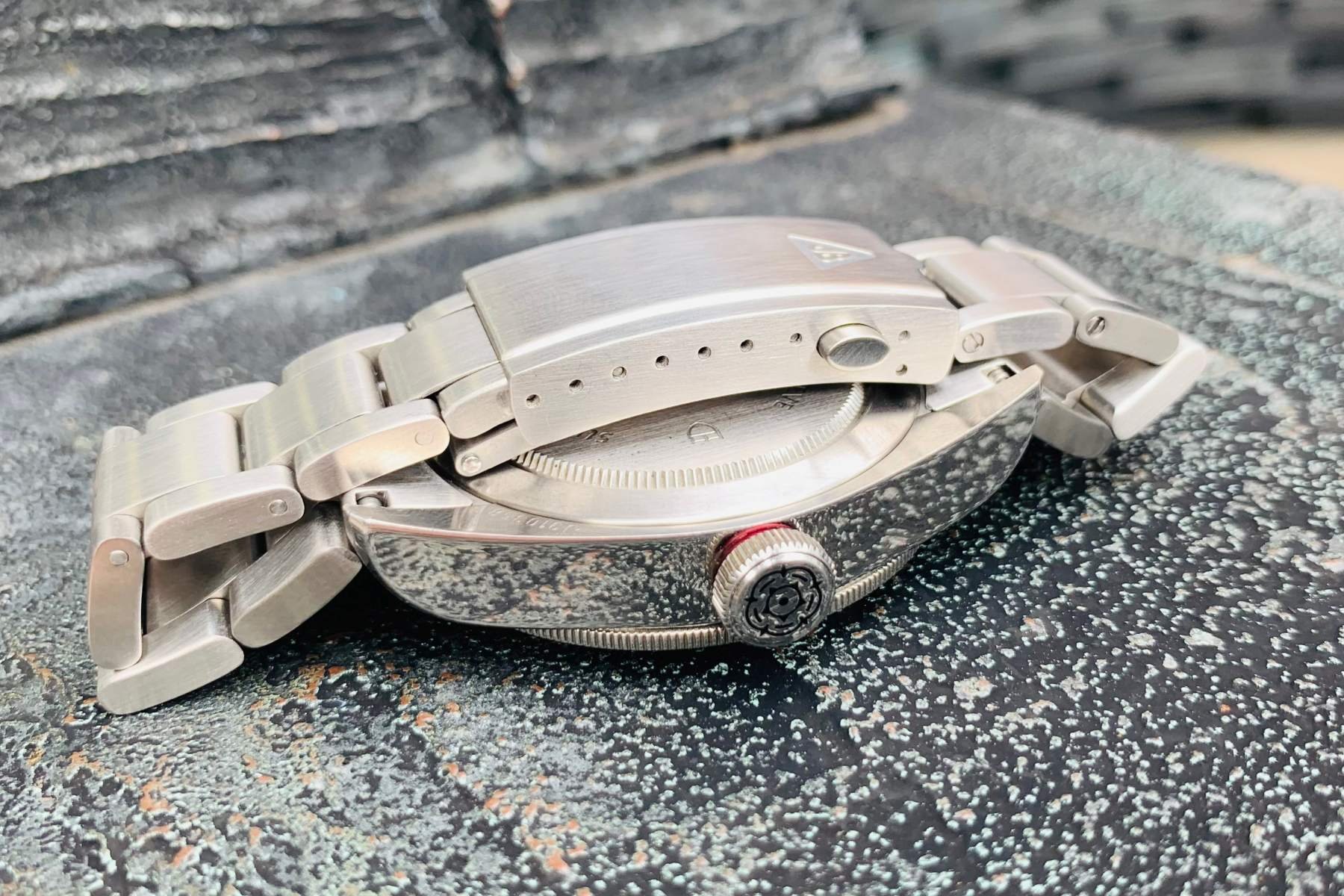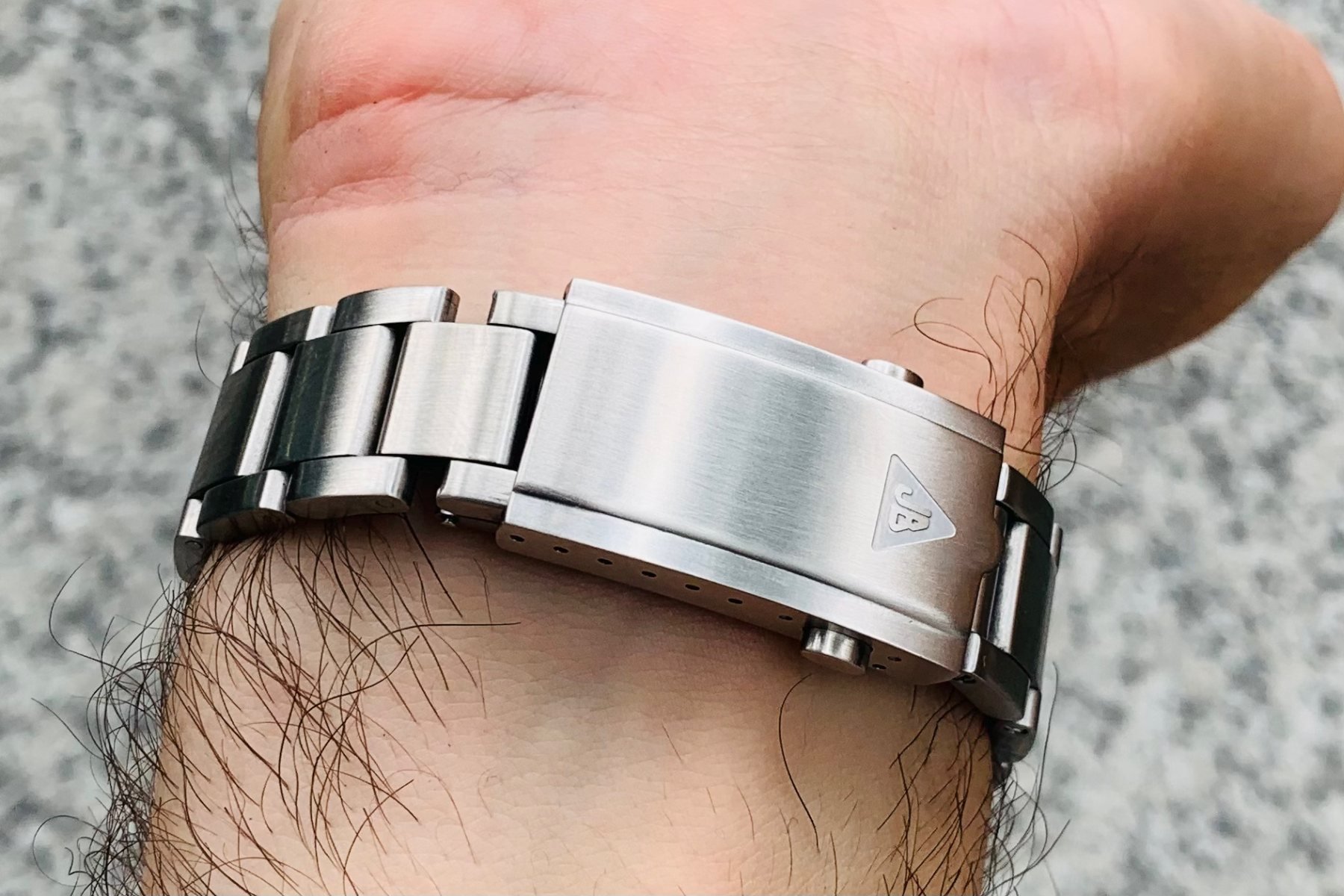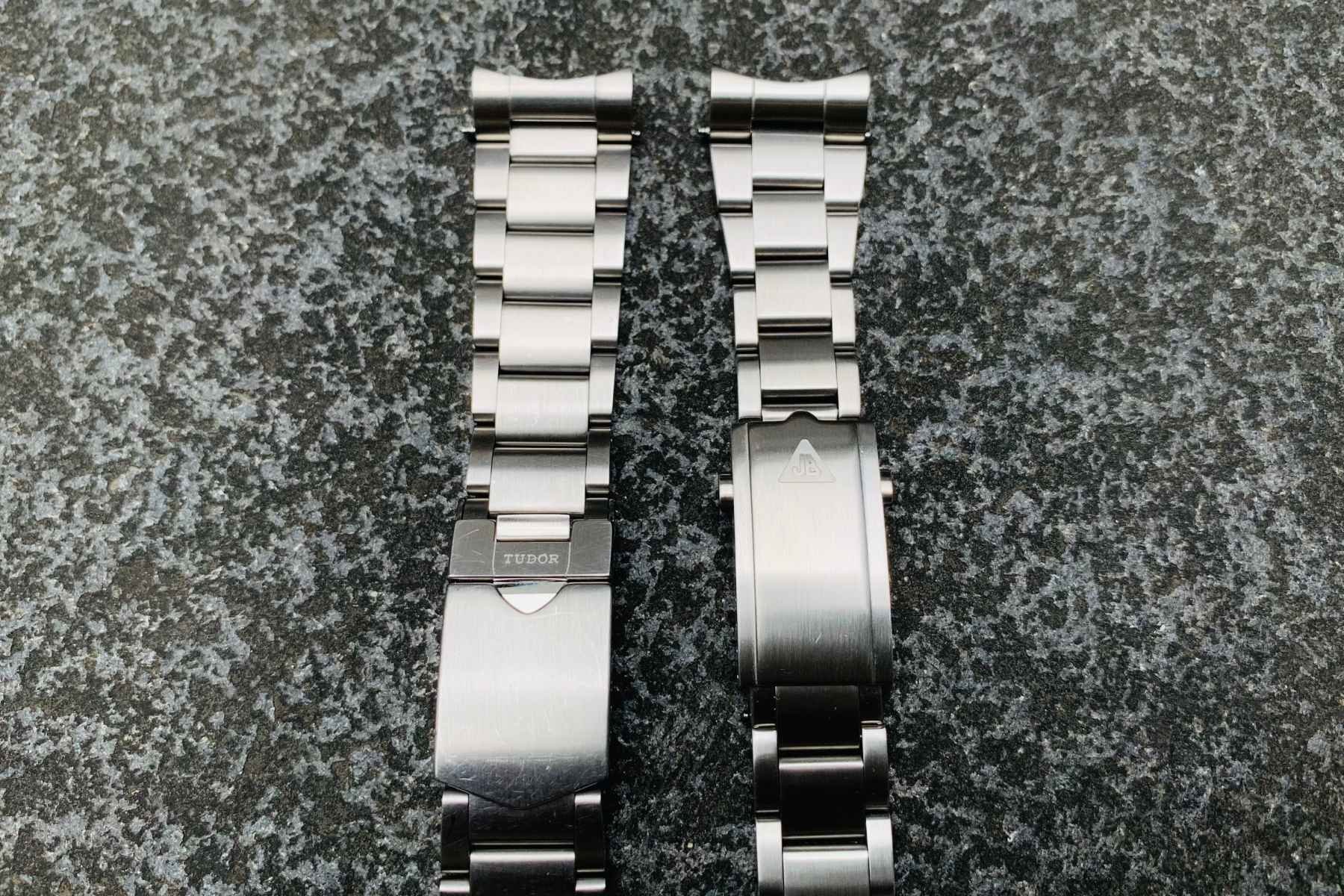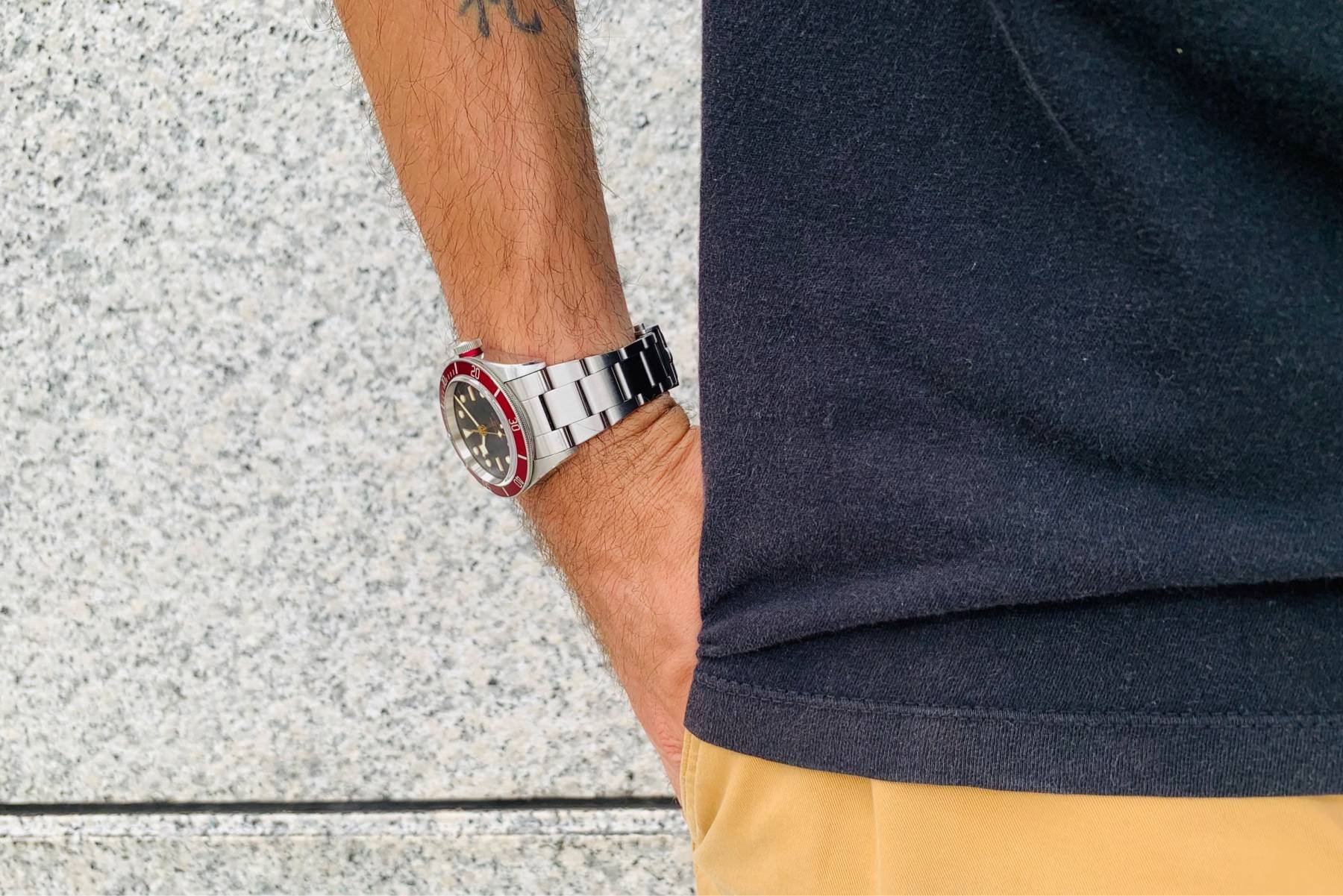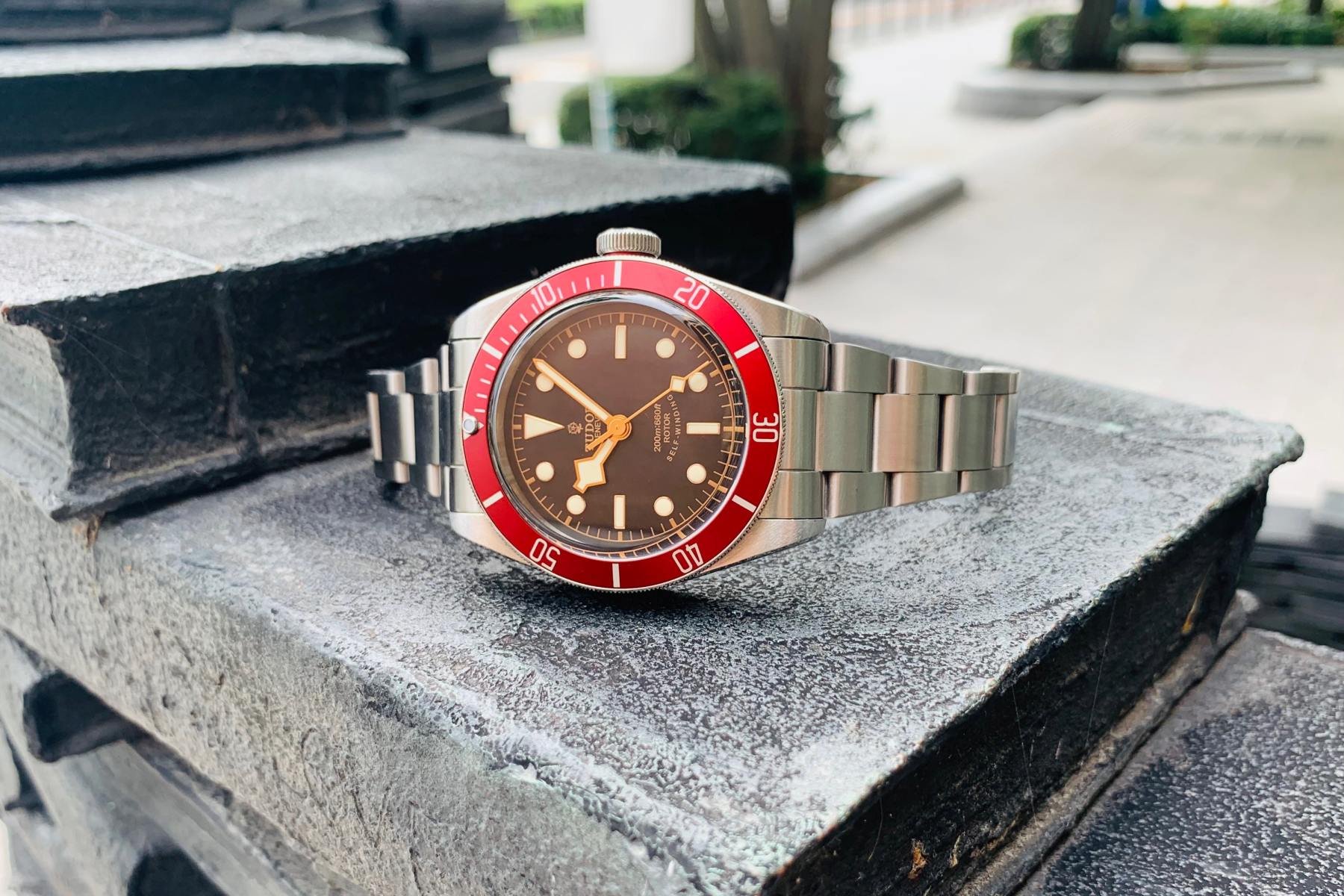Forstner Model O Bracelet — A Faux-Rivetless Choice For The Tudor Black Bay
Back in March, Forstner gave me the chance to check out the Model J bracelet with my Tudor Black Bay. As I had never liked how the OEM Tudor bracelet felt on my wrist, I was eager to see how the Model J would compare. Long story short, I loved it, and my Black Bay has been “jubilified” ever since. But when an opportunity arose to check out the Model O bracelet, to be honest, I first wondered if it was worth doing at all. The Model O is an Oyster-style affair that many who hate the faux rivets on Tudor’s bracelets should love. But my first-gen Black Bay bracelet didn’t have those “frivets” in the first place. How different could the Model O really be? Well, as it turns out, quite different indeed.
As I explained in my review of the Model J, the OEM Black Bay bracelet has always felt oddly sharp to me. It doesn’t feel so in the hand, but when wearing the watch, the edges of the links scrape my wrist and annoy me to no end. Therefore, when selecting an aftermarket bracelet, a soft feel on the wrist is my primary concern. If I left it at that, my Black Bay and I could live happily ever after with the Forstner Model J. The Model O, however, has two other features that the Tudor Oyster-style bracelet does not. It provides a greater taper from the end links to the clasp, and it has a spring link at the end for even more flexibility. When I found out about these aspects, I was intrigued, and I knew that the Model O deserved a chance.
Forstner Model O — Initial impressions
The Forstner Model O follows the Oyster-bracelet design popularized by Rolex and used by countless other watch brands. It is, arguably, the most famous bracelet design in the world and a straightforward choice for a dive watch like this. Nevertheless, in the seven years that I’ve owned my Black Bay, I’d grown so accustomed to seeing it on straps (and recently, the Model J) that switching it back to a three-link bracelet was a bit weird at first. That feeling only lasted for about a minute, though, before the familiarity set in and the watch felt right again.
In contrast to the Tudor bracelet, whose links are polished on the sides, the Forstner Model O is brushed on every single surface. When it comes to function-first Oyster-style bracelets like this, I much prefer a completely brushed finish. In general, the brushing on the Model O made a positive first impression. We’ll get into the finer points a bit later.
- Tudor bracelet (left) and Forstner Model O (right)
- Tudor bracelet (left) and Forstner Model O (right)
Right off the bat, I noticed how substantial the Forstner end links are. They look a bit chunkier and feel heavier than the Tudor end links, though my digital scale says both weigh five grams each. It might have to do with the weight distribution. Regardless, the Forstner end links fit very snugly between the lugs. They even have less play than the Tudor end links. That was a nice discovery because the jiggly Tudor end links were always a slight pet peeve of mine. Crucially, the Forstner end links have a wider channel for tools, making it easier to access the (included) spring bars. I was able to use a standard fork-style tool to install and remove the bracelet a few times without scratches or headaches.
Available sizes
The Forstner Model O for the Tudor Black Bay comes in 20mm and 22mm widths. The 20mm version will fit the Black Bay Fifty-Eight, while the 22mm size will fit the standard Black Bay, Black Bay Chronograph, Black Bay 41, and Black Bay GMT. On both versions, the links taper to 16mm at the milled clasp, which itself measures 18.5mm wide. What stands out is how dramatically the links taper, especially on the 22mm version I have here. The full 6mm taper spans just three links, giving the bracelet an elegant and thoroughly vintage look. But that also comes with a practical benefit, as every link from the fourth to the clasp is removable. The Tudor bracelet, on the other hand, only tapers to 18mm over a span of five links. This makes it appear much bulkier overall, and it leaves much less leeway to get the right fit.
Sizing the Model O to my wrist
Removing links from the Model O was incredibly easy. Each solid link simply uses one single-sided screw. Forstner even includes a complimentary screwdriver, which provides the perfect amount of torque to not damage the screw heads. To size the bracelet to my ~17cm (6.75in) wrist, I started by removing four links. With three links left over, I was also able to adjust the clasp to the best position for my wrist. This is something I can’t say for the OEM Tudor bracelet. With that one, I had to take out all the removable links, and the clasp still sits further back than I would like.
The drilled holes in the clasp of the Model O bracelet also allow for six micro-adjustment positions. I moved the final link into the third position from the end. This, admittedly, was the most difficult task because the final link has a hollow, spring-loaded construction. While I love the practicality and comfort it provides, the final hinged portion is quite small indeed. It made it difficult for me to get a good grip, and even caused the link to jam in a strange, bent position. When this happened, I couldn’t move the link at all, and I had to remove it from the clasp and start all over. Ultimately, I found it almost impossible to slide the link any further than the third position. Luckily, that felt just about right for me. Making the adjustment, however, took over 15 minutes alone. It was the least pleasurable aspect of the sizing experience, but let’s move on to the wearing experience.
Weight and fit
Sized to my wrist with four links removed, the Forstner Model O weighs 71 grams. By comparison, the Tudor bracelet, also sized to my wrist, is only a tad heavier at 75 grams. The watch head comes in at 81 grams, bringing the total weight to 152 and 156 grams respectively. On the wrist, I don’t notice the four-gram differential, and I doubt that any of you reading this would either. As such, the Model O seems right at home on the watch, giving the Black Bay a great, balanced feel. As I mentioned earlier, the end links are quite snug, so I never feel or hear them “click” against the lugs or the mid-case. I don’t know if Tudor has improved its end links in the last 10 years, but I greatly prefer the Forstner end links in this comparison.
For how long the rest of the links are, the Model O hugs my wrist nicely. Not as nicely as the Model J does, but to expect it to do so would be silly. I can’t emphasize enough how much I love the 6mm taper. It’s dramatic, fluid, and looks incredibly refined. Due to the bracelet’s all-brushed finish, it’s quite visually pronounced, and I find it a huge improvement over the stock Tudor bracelet. I also find the Model O far more comfortable overall.
The folding arms of the clasp sit more centered on my wrist thanks to the adjustability afforded by the links. The stretch link has also come in handy during this sweaty, endless summer. I’ve noticed it doing its job perfectly when my wrist swells with the heat. Though not as refined as, say, a Pelagos spring-loaded clasp, it’s a thoughtful inclusion that works great in real life.
Overall finishing
The bracelet’s brushed finish is good for its sub-$200 price. It’s not the most amazing finish, but it’s certainly not poor either. It shows vertical striations rather than a smooth satin texture, but the strokes are even and straight across the surface of the links. Although the tops of the Black Bay’s lugs have a diagonally brushed finish, I didn’t find the combination jarring at all. In fact, not even the Tudor bracelet has diagonal brushing, so it’s apples to apples as far as I’m concerned.
The clasp, however, was the one area where I found the finish underwhelming. You probably can’t tell from the pictures, but the brushing is not quite as straight, and some of the striations even appear slightly curved. I don’t know if this goes for all examples or just some. But either way, I won’t lose any sleep over it. The clasp will get the lion’s share of scratches anyway. Thankfully, the milled clasp works brilliantly. With a double-pushbutton closure, there’s no way it’s popping open.
And when it comes to the feeling of the bracelet on the wrist, I have to say it’s an improvement over the OEM Tudor bracelet. In my hand, the edges of the Model O do feel sharper, but on my wrist, I don’t experience the same discomfort. The same phenomenon happened with the Forstner Model J. It felt sharper in the hand but much better on the wrist. I’d say the Model O isn’t quite as soft as the Model J, but I’d choose it over the Tudor bracelet any day of the week.
Pricing and final thoughts
The Forstner Model O sells for US$175 plus shipping. As such, the final price will depend on where you live. Do I think it’s worth it? Overall, I’d say yes. I think the heft, finishing, and fit are worthy of the price. Furthermore, I think the Model O is an intriguing alternative to the Tudor OEM bracelet on multiple levels. For those who own the Black Bay with the standard Oyster-style bracelet, it offers a better-balanced and more comfortable wearing experience. For owners of the current Black Bay with the faux-rivet bracelet, it provides both of the above plus a much cleaner look. And for owners of either model, the greater taper of the links and the handy stretch link are features that set the Model O over the top.
Having experienced both the Forstner Model O and the Model J, I would probably wear the Model J more often. However, that is due more to the aesthetics than to any qualitative differences between them. I have grown to love the Jubilee look on the Black Bay. But if you prefer the Oyster look, then the Model O could be the ticket!
For more information about Forstner and all of its other products (including the Model O for the Omega Speedmaster and Seamaster!), please visit the brand’s website, ForstnerBands.com. Feel free to also tell us about your experiences with Forstner bracelets in the comments.

